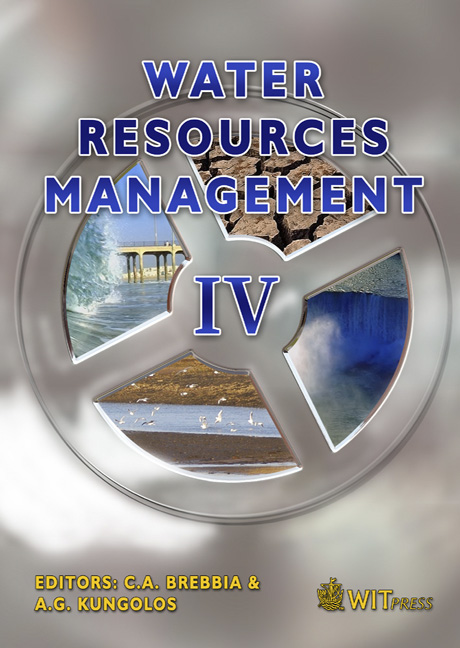Hydrochemical Evaluation Of A Heavy Contaminated Shallow Aquifer Diluted By Delice River Waters, Central Anatolia, Turkey
Price
Free (open access)
Transaction
Volume
103
Pages
10
Published
2007
Size
1,877 kb
Paper DOI
10.2495/WRM070351
Copyright
WIT Press
Author(s)
M. Çelik
Abstract
The aim of this study is to hydrochemically evaluate the dilution with infiltrating waters from the Delice River into a shallow alluvium aquifer which is heavily contaminated. Whereas the hydrochemical content of the Delice River water has a conductivity of 1,610 µS/cm and total dissolved solids of 938 mg/l, the hydrochemical content of the shallow aquifer groundwater displays spatial variations in conductivity (between 2,340 and 9,360 µS/cm) and total dissolved solids (between 1,669 and 5,957 mg/l). The hydrochemical parameters (Na+, SO4 2-, Cl-, boron, HCO3 -), which characterise the different components of the groundwater, allowed the determination of the origin of groundwater contamination. The shallow alluvium aquifer groundwater contamination has been partly diluted by the Delice River waters. The origin of the contamination is Çevirme Formation lithologic units, lying southwest of the study area, underlying the aquifer and consisting of claystone and gypsiferous marls. Keywords: Delice River, shallow aquifer, surface water/groundwater relation, hydrochemistry, lithologic contamination, dilution. 1 Introduction The study area, 190 km east of Ankara (Turkey), is located in the Kızılırmak basin (fig. 1). Surface water of the area is represented by the Delice River and Cender creek. The Delice River extends along the shallow alluvium aquifer and has a hydraulic connection with the aquifer.
Keywords
Delice River, shallow aquifer, surface water/groundwater relation, hydrochemistry, lithologic contamination, dilution.





